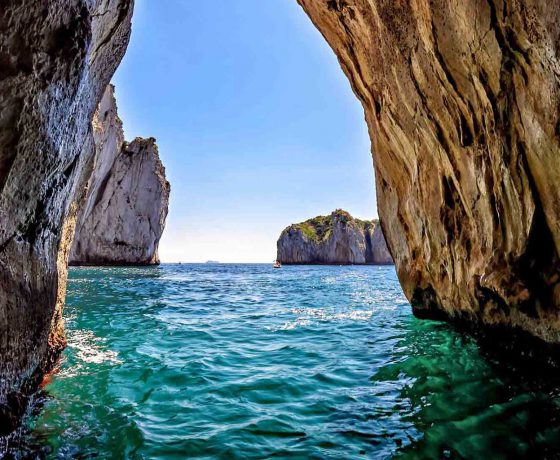Paestum
Paestum, also called Poseidon in honour of Poseidon,(latinised name of the term Paistom with which it was called after its conquest by the Samnites) is an ancient city of Magna Graecia. Paestum used to be called Pesto until 1926, when it was renamed to the current version. The extension of the town is clearly recognisable as it is still enclosed between Greek walls like it was in the Lucan and Roman times.
Paestum was founded by the Greeks around the seventh century BC and it was later occupied by the Italic people of Lucania. In 273 it became a Roman colony and we now know that the end of the Roman Empire coincided roughly with the end of Paestum. In fact, following an outbreak of malaria around 500 AD and aggravated by the unhealthy land, Paestum was abandoned by the habitants who took refuge in the nearby mountains. The new settlement, called Capaccio, took its name from the springs of the Salso river called Caput Aquae. Capaccio was a refuge from malaria and the Saracen raids. One of the most important celebrations of habitants of Capaccio was the cult of St. Maria del Granato, that is still venerated in the Sanctuary of Madonna del Granato today. In the eleventh century the Norman Ruggero began depredating the materials of the Paestum’s temples and Robert Guiscard took the abandoned buildings of the city to obtain and marble the sculptures to be used in the construction of the Cathedral of Salerno.
With the abandonment of Paestum, the ancient city was only a vague memory and during the Renaissance, several poets and writers have mentioned Paestum ignoring the exact location.
Only in the early eighteenth century, three theaters not far from the river Sele were found and along with descriptive works in the Kingdom of Naples that referred to Paestum and the opening of the SS18 street by Charles of Bourbon there was the final discovery of the ancient city. The art historian Winckelmann refereed to the monuments of Paestum, while Goethe represented an evocatively romantic encounter with Paestum, describing this place as full of solemn and impressive ruins and writing on his feeling of being a silent witness immersed in the desolation of this location.
In this widespread interest in the early twentieth century, the archaeologists discovered a limestone generated over years of precipitation from the waters of the Salso river. The first excavations started between 1907 and 1914 and they were concerned with the “Basilica”. Then, between 1925 and 1938 the forum was discovered. Shortly after that, there was the identification of the so-called Temple of Peace and Temple of Ceres, the comitium, the Marina and Justice Door, and the amphitheater. Intensified searches around the temples brought to the the recovery of the votive offerings of the “Basilica” and “Temple of Neptune” and the discovery of the Tomb of the Diver and the rich grave goods with the beautiful pottery produced locally by renowned artists like Assteas, Python and the Painter of Aphrodite.












